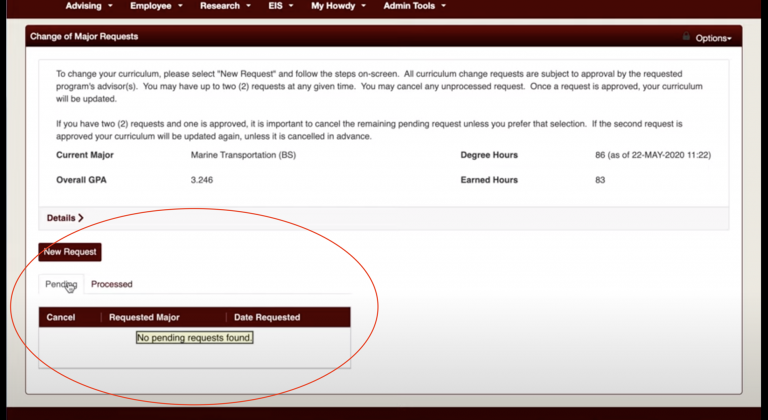TAMU Law School LSAT Requirements
TAMU Law School LSAT Requirements: Situated in Fort Worth, Texas, the Texas A&M University School of Law has rapidly evolved as a formidable hub for legal studies. Its ascent in the academic hierarchy means a fiercer admissions battleground, with the Law School Admission Test (LSAT) playing a pivotal role in shaping its student body.School News Portal
Administered by the Law School Admission Council (LSAC), the LSAT remains a keystone for all aspirants of American Bar Association-approved law schools. Its design specifically targets the evaluation of skills critical to law, including reading comprehension, analytical prowess, and logical reasoning. For TAMU Law School, this test provides a standardized lens to scrutinize the academic potential of its diverse pool of applicants.
As the admissions landscape becomes more competitive, the LSAT offers Texas A&M University’s School of Law an objective metric. This ensures that the institution’s selected candidates not only possess the foundational skills required for a legal career but also resonate with the school’s commitment to academic excellence.
Read Also: Tamu Housing Requirements
The Importance of the LSAT
The LSAT is a standardized test administered by the Law School Admission Council (LSAC) and is used by all American Bar Association-approved law schools. The LSAT measures skills deemed essential for success in law school, such as reading comprehension, logical reasoning, and critical thinking.
Why is the LSAT crucial for TAMU Law School?
- Objective Measure: With applicants from diverse academic, personal, and professional backgrounds, the LSAT provides an objective metric that allows admissions committees to compare applicants.
- Predictor of Success: Research indicates a correlation between LSAT scores and first-year average law school grades.
- Benchmark for National Standards: The LSAT helps TAMU maintain its national reputation by selecting students who have demonstrated potential through standardized testing.TAMU Law School LSAT Requirements
Read Also: Tamu Engineering Graduation Requirements
LSAT Score Range for TAMU Law School
While the exact LSAT score required for admission varies from year to year based on the applicant pool, prospective students can get an idea by looking at previous classes’ percentiles.
- 25th Percentile: This score means that 25% of the enrolled students scored at or below this number. For recent years at TAMU Law School, this has typically hovered around the mid-150s.
- 50th Percentile (Median): Half of the enrolled students scored below this score and half scored above. TAMU’s median LSAT score has generally been in the high 150s to low 160s in recent years.
- 75th Percentile: 75% of the enrolled students scored at or below this score. This has been in the low to mid-160s for TAMU Law School.
It’s worth noting that while these scores provide a guideline, TAMU Law School employs a holistic approach, considering various factors beyond the LSAT score.
Read Also: TAMU Q-Drop Deadline
What if Your LSAT Score is Below the 25th Percentile?
While a high LSAT score can boost one’s chances, scoring below the 25th percentile doesn’t necessarily shut the door on admission. Here’s what you can do:
- Retake the LSAT: If you believe you can improve, consider retaking the test. Many students find their scores increase upon a second attempt.
- Strengthen Other Areas: Showcase your strong GPA, impressive work experience, personal statement, letters of recommendation, and other achievements.
- Demonstrate Interest: Visit the campus, attend information sessions, and express your genuine interest in attending TAMU Law School.
Read Also: TAMU Law Graduation Requirements
Tips for LSAT Preparation
Achieving a competitive LSAT score is crucial for TAMU Law School applicants. Here are some tips:
- Understand the Test Format: Familiarize yourself with the LSAT sections – Logical Reasoning, Reading Comprehension, and Logic Games.
- Practice with Real LSAT Tests: Use official LSAT prep books and tests to simulate real testing conditions.
- Consider a Prep Course: Numerous LSAT prep courses, both online and in-person, can offer structured study plans and strategies.
- Stay Consistent: Rather than cramming, consistent, daily study sessions can yield better results.
Beyond the LSAT: Other Factors in Admission
While the LSAT is undeniably crucial, TAMU Law School looks at several other factors:
- Academic Performance: A strong GPA from an undergraduate institution can weigh heavily in the admissions process.
- Personal Statement: This is your opportunity to showcase who you are beyond numbers and share your passion for law.
- Letters of Recommendation: Strong endorsements from professors or professionals can make a significant difference.
- Extracurricular Activities: Leadership roles, volunteer work, and other engagements can paint a picture of a well-rounded individual.
- Diversity: TAMU values a diverse student body, so highlighting unique perspectives or experiences can be beneficial.
Read Also: TAMU Communications Transfer Requirements
Conclusion
The LSAT is a pivotal part of the admissions process for Texas A&M University School of Law. However, it’s essential to remember that the school takes a holistic approach, considering various aspects of an applicant’s profile. A combination of a strong LSAT score, a solid GPA, impressive personal statements, and glowing letters of recommendation will position any prospective student well for consideration at TAMU Law School. As always, it’s recommended to reach out directly to the admissions office for the most up-to-date information and to clarify any queries you might have about the application process.


